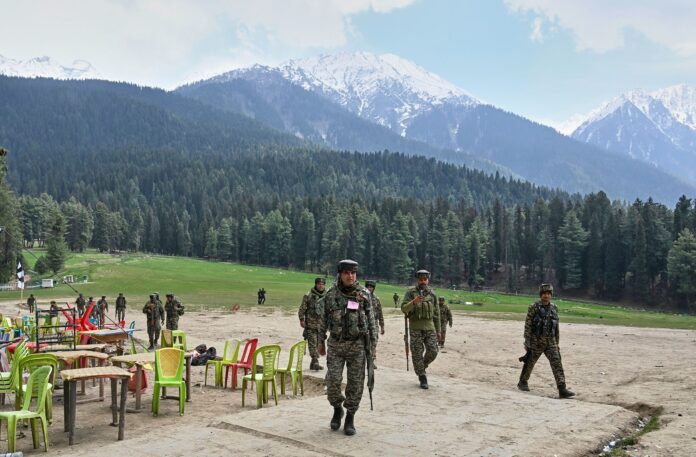TCN News Desk
New Delhi: A tense pursuit has been unfolding in the dense and treacherous forests of South Kashmir over the past five days. Security forces have come “very close” to cornering the group of terrorists behind the April 21 massacre in Pahalgam’s Baisaran meadow, but the elusive men have slipped through each time — “at least four times” — in what one officer described to The Indian Express as “a cat and mouse game.”
Sources told the English daily that the attackers have been traced multiple times with the help of local intelligence, combing operations and surveillance inputs. But thick forests and rugged terrain have offered the fugitives ample cover.
“There have been moments where they have been visibly located, but by the time they could be engaged, they had escaped. The forests are very thick and it is not easy to chase someone even after visibly locating them. But we are sure we will get them, it is only a matter of days,” a military officer told the newspaper.
Reportedly comprising four terrorists, including two Pakistani nationals, the group has been hunted by the Indian Army, the Central Armed Police Forces and the Jammu & Kashmir Police since the chilling attack that claimed 26 lives and left several injured.
The trail first led security forces to the forests near Hapat Nar village in Anantnag’s Pahalgam tehsil. But the attackers melted into the foliage. The chase then moved to the forests of Kulgam, where an exchange of gunfire reportedly took place — but once again, the men managed to flee.
Later sightings were reported along the Tral ridge and then in Kokernag, where the terrorists are currently suspected to be moving, the security sources told IE. Their ability to survive off-grid has added layers of complexity to the manhunt.
“These terrorists are operating rather carefully. Generally, terrorists have to arrange for food and that is when they get to villages. Sometimes, they get their local contacts to supply food in the jungles. This generates human intelligence and gives security forces the opportunity to corner them,” the publication quotes a military officer as saying.
IE has learned that the terrorists once entered a village at dinner time, raided a house for food and vanished before troops could intercept. “By the time security forces received the information and reached there, considerable time had lapsed,” the officer said.
The geography is not helping. This winter, the Kishtwar range, which connects to the higher reaches of Pahalgam, received less snow than usual. This, as per the source cited by the newspaper, has opened new routes for terrorists to potentially slip into the forests of Jammu that are even harder to navigate and monitor.
“The problem is there is a front door to the Kashmir side and a back door towards the Jammu side. Of late, foreign terrorists have been increasingly using the Jammu side to infiltrate and operate. Our counter-infiltration grid is not as strong on that side as it is in North Kashmir,” the officer said.
Despite the setbacks, security agencies remain optimistic. “Eventually, they will make a mistake,” one source told The Indian Express.
Officials are particularly focused on two mobile phones taken from the tourists murdered at Baisaran. The technical intelligence network is watching closely for any attempts to use those devices to communicate locally or across the border.
In the meantime, the counter-infiltration grid on both sides — Jammu and Kashmir — has been tightened. Border forces are on high alert. On the ground, the J&K Police are interrogating suspected overground workers in South Kashmir, hoping to trace logistical support and uncover whether more hands were involved in orchestrating the horrific attack.


